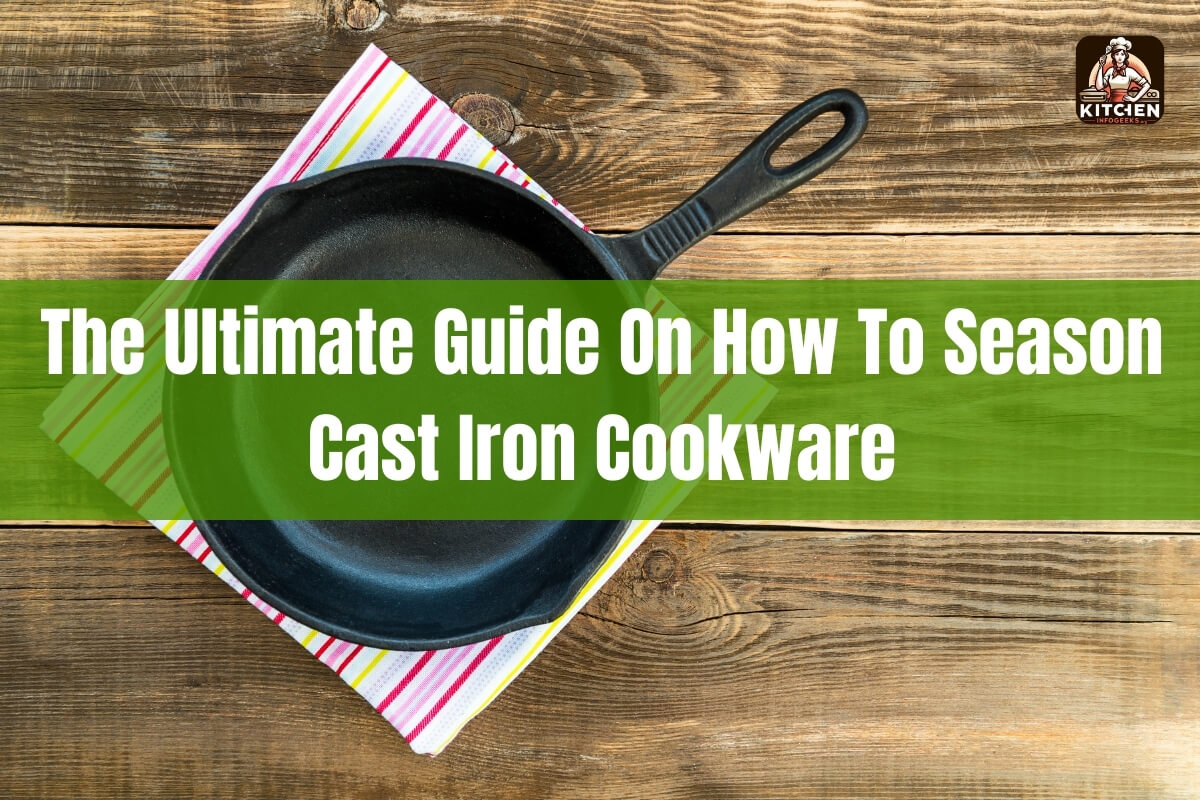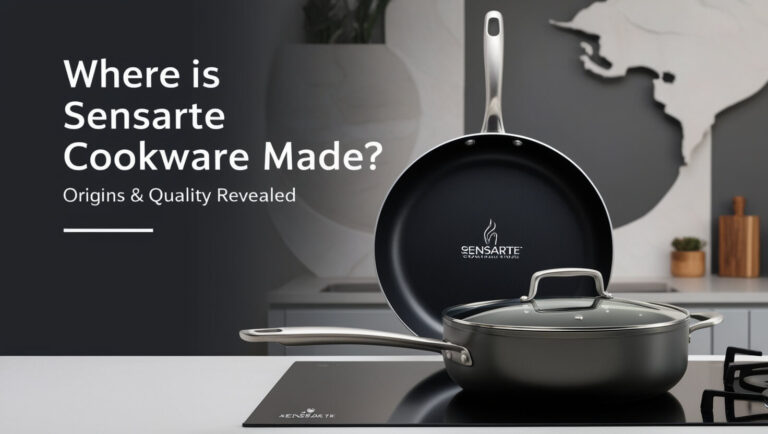
If you’re the proud owner of a brand new cast iron pan or an heirloom skillet that’s seen better days, properly seasoning your cast iron cookware is essential for ensuring a lifetime of delicious, stick-free meals. In this comprehensive guide, we’ll dive deep into the science behind seasoning, provide step-by-step instructions for both initial and ongoing seasoning, and share tips for maintaining your cast iron’s nonstick properties.
Understanding the Science Behind Seasoning Cast Iron
Cast iron cookware is beloved for its exceptional heat retention, durability, and natural nonstick properties. However, these desirable qualities don’t come straight out of the box. In order for cast iron to reach its full potential, it needs to be properly “seasoned.”
Seasoning refers to the process of creating a thin, protective layer of polymerized fat on the surface of the cast iron. When you heat fat, such as oil or shortening, in a cast iron pan, the fat molecules undergo a chemical reaction called polymerization. This causes them to bond to the pan’s metal surface and to each other, forming a smooth, almost glassy coating.
This seasoned layer serves a few crucial purposes:
- Rust Prevention: The seasoning protects the cast iron from moisture and air, preventing oxidation and rust.
- Nonstick Properties: The polymerized fat creates a smooth, almost nonstick surface that makes cooking and cleaning a breeze.
- Durability: With proper care, a well-seasoned cast iron pan can last for generations, developing a unique patina and flavor profile over time.
Without this seasoned layer, cast iron would be prone to rusting, sticking, and generally poor performance. That’s why taking the time to properly season your cast iron cookware is such an important first step.
Preparing a New Cast Iron Pan for Seasoning
Before you can begin the seasoning process, you’ll need to make sure your cast iron pan is clean and ready to go. Even if your pan is brand new and labeled as “pre-seasoned,” it’s a good idea to give it a quick wash and dry before seasoning.
Start by scrubbing the pan with warm, soapy water and a stiff-bristled brush or scrubbing pad. Avoid using anything too abrasive, as you don’t want to strip away any of the existing seasoning. Rinse the pan thoroughly and dry it completely, either with a clean towel or by placing it on the stovetop over low heat until all moisture has evaporated.
It’s crucial that your pan is completely dry before moving on to the seasoning step. Any residual water can cause the pan to rust, undoing all your hard work. Once your pan is clean and dry, you’re ready to begin the seasoning process.
Step-by-Step Guide to Seasoning Cast Iron
Applying the Oil
The first step in seasoning your cast iron is to coat the entire surface, both inside and out, with a thin layer of oil. The key word here is “thin” – you don’t want to use too much oil, as that can lead to a sticky, gummy finish.
When it comes to the type of oil to use, you have a few options, but the most commonly recommended are:
- Vegetable oil
- Canola oil
- Grapeseed oil
These neutral-flavored oils have high smoke points, which means they can withstand the high temperatures required for proper seasoning. Avoid using olive oil or other low-smoke point oils, as they may burn and impart an undesirable flavor.
Using a paper towel or clean, lint-free cloth, apply a thin, even coating of oil to every surface of the pan, including the bottom, sides, and even the handle. Once the pan is fully coated, use a clean, dry paper towel to buff away any excess oil. The pan should feel smooth and barely oily to the touch.
Heating in the Oven
Now that your pan is coated in oil, it’s time to bake it in the oven to create that all-important polymerized layer. Preheat your oven to 450°F (232°C) and place the oiled pan upside down on the middle rack.
The reason we place the pan upside down is to prevent any excess oil from pooling and creating sticky spots on the cooking surface. You can also place a baking sheet or sheet of aluminum foil on the rack below to catch any drips.
Let the pan bake for 1 hour. During this time, the oil will begin to polymerize and bond to the cast iron, forming the first layer of seasoning. Once the hour is up, turn off the oven and let the pan cool completely inside. This gradual cooling helps to set the seasoning.
Repeating the Process
For best results, you’ll want to repeat the oiling and baking process several times to build up multiple layers of seasoning. Aim for 3-4 rounds of seasoning for a brand new pan, or 1-2 rounds for a pan that’s already well-seasoned.
Each time you season the pan, follow the same steps:
- Coat the entire surface with a thin, even layer of oil.
- Buff away any excess oil with a clean, dry paper towel.
- Bake the pan upside down at 450°F (232°C) for 1 hour.
- Allow the pan to cool completely in the oven before handling.
The more times you repeat this process, the deeper and more durable the seasoning will become. With each successive round, you’ll notice the pan’s surface becoming darker and more glossy, a telltale sign of a well-seasoned cast iron skillet.
Maintaining Cast Iron Seasoning
Once you’ve gone through the initial seasoning process, your cast iron pan should be well on its way to developing a beautiful, nonstick patina. But maintaining that seasoning is an ongoing process that requires a bit of TLC.
Cooking to Build Up Seasoning
One of the best ways to keep your cast iron pan well-seasoned is to simply use it regularly. Cooking foods that are high in fat, such as bacon, fried chicken, or even baking cornbread, helps to further build up and strengthen the seasoning.
The heat and fat from these types of dishes causes additional polymerization, reinforcing the existing seasoning layer. Over time, this regular use will create a durable, smooth cooking surface that only gets better with age.
Cleaning and Storing Cast Iron
Proper cleaning and storage techniques are also important for preserving your pan’s seasoning. Avoid using harsh abrasives or soaking your cast iron in water, as these can strip away the seasoning. Instead, stick to a simple rinse with hot water and a stiff-bristled brush or scrubber.
Once cleaned, make sure to dry the pan thoroughly, either with a clean towel or by placing it back on the stovetop over low heat. Before storing, apply a thin coat of oil to the entire surface to prevent rust. Many cast iron enthusiasts recommend storing pans nested with paper towels in between to protect the seasoning.
Troubleshooting Cast Iron Seasoning Issues
Even with the best of care, your cast iron pan’s seasoning may occasionally need a little extra attention. Here are some common issues and how to address them:
Dealing with Sticking or Discoloration
If you notice your pan becoming increasingly sticky or discolored, it’s likely a sign that the seasoning is deteriorating. This can happen for a few reasons:
- Cooking acidic foods like tomatoes or citrus
- Allowing the pan to sit with food residue for too long
- Improper cleaning techniques that strip away the seasoning
To restore the seasoning, simply repeat the oiling and baking process a few times. You may also want to consider avoiding highly acidic foods in your cast iron until the seasoning has been reinforced.
Restoring Severely Damaged Cast Iron
In cases of heavy rust or built-up grime, you may need to take more drastic measures to restore your cast iron pan. This could involve stripping away the existing seasoning and starting from scratch.
To do this, you can try scrubbing the pan with a steel wool pad and warm, soapy water. Be as thorough as possible in removing all the old seasoning and rust. Once the pan is clean, dry it completely and proceed with the full seasoning process outlined earlier.
With a little elbow grease and patience, you can bring even the most neglected cast iron skillet back to life. Just be sure to maintain it properly going forward, and your pan will reward you with years of delicious, stick-free cooking.
Conclusion
Seasoning your cast iron cookware may seem like a daunting task, but it’s a crucial step for unlocking the full potential of these versatile pans. By understanding the science behind seasoning and following the simple steps outlined in this guide, you’ll be well on your way to enjoying the benefits of a perfectly seasoned cast iron skillet.
Remember, the key to maintaining a well-seasoned cast iron pan is consistent use and proper care. Embrace the process, have fun with it, and you’ll be rewarded with a lifetime of exceptional cooking performance. Happy seasoning!






